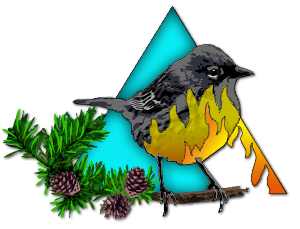Navigation

Methods and FAQ about the LSFSC citation database
How were citations identified for inclusion in this list?
What topic and location criteria were used to decide whether or not a citation was included in this list?
What is unique about the way these citations are indexed?
Have you noticed missing citations in the database?
How will this list be kept current?
How were citations identified for inclusion in this list?
We performed a keyword search of all years in all databases cataloged by the ISI Web of Knowledge, using combinations of the following search terms: fire, burn, wildfire, prescribed fire, prescribed burn, controlled burn or smoke, refined by Michigan, Minnesota, Wisconsin, New York, Ohio, Ontario, Manitoba, Great Lakes, Lake States, Midwest, or North Central. We included the geographic refinements as the final part of the search string. The abstract and/or full publication for each citation returned was checked to confirm study location and relevance to fire and the Lake States region (see description of topic and location criteria below). Additional publications that were not captured in these searches were included if we became aware of them through literature cited lists, database reviewers, or other sources. Agency technical reports, book chapters and academic theses are often not indexed by ISI, and we acknowledge that our list of these types of documents is currently incomplete. We will add relevant documents to our database as we become aware of them, and we welcome citation suggestions from our users.
What topic and location criteria were used to decide whether or not a citation was included in this list?
To be included in the citation database, the publication must provide information on fire, fire history, fire regimes, fire exclusion, fire suppression activities, fire effects, post-fire succession, fire surrogate treatments (including ecological forestry approaches), or present a site description of a fire-impacted location (even if control sites/areas were not included) or an ecological description of a fire-adapted/fire-dependent ecosystem. Publications of field-based studies must include at least one study site located inside or adjacent (within approximately 150 km) to the LSFSC region (see map on Consortium homepage). Modeling or synthesis studies that present results at regional, national or continental scales are included if the data can be associated with specific states/provinces, ecoregions or other spatially explicit classifications that include all or portions of the Lake States region. Review articles were included when they included information generated from studies conducted in, or provided information directly applicable to, the Lake States region.
What is unique about the way these citations are indexed?
Keywords associated with each article in the database include 1) author-assigned keywords, and 2) additional keywords assigned from a standardized list, including the state, province or region of focus, ecosystem type, focal species, and focal topics. Topic keywords were also assigned when the publication presented additional data (such as soil chemistry, fire behavior, or weather) as background to the study, even if it was not the main focus of the publication.
Have you noticed missing citations in the database?
There may be a few explanations for this:
1) Keyword searches performed for this project are unable to capture publications in journals that are not indexed by ISI;
2) Our keyword searches are unable to capture publications for which author-assigned keywords, titles, or abstracts did not have a clear connection to fire; and
3) We did not include publications of studies conducted in a fire-adapted ecosystem unless the study provided information that was directly relevant to fire. For example, a study of bird community assemblages that was conducted in an oak savanna would be excluded unless information was provided that was directly relevant to fire, such as a comparison of bird communities between burned and unburned sites.
We ask that users alert us if they are aware of relevant articles, book chapters, or theses that are missing from the citation database, after referring to the Methods description of the criteria used to include or exclude publications from the citation database.
How will this list be kept current?
We use ISI to send automatic alerts of new publications that meet our saved keyword search criteria. Publications identified by these automatic alerts will be added to the database periodically. Please rely on your local University’s library if you are seeking articles published within the past 6 months.

.png)
